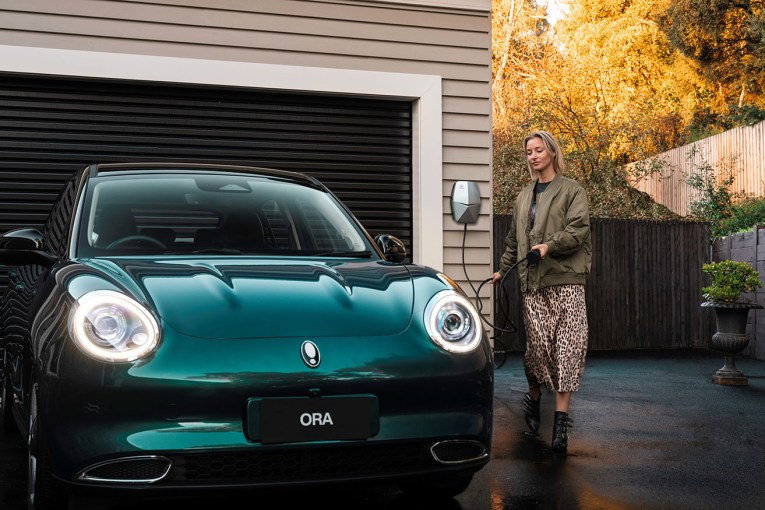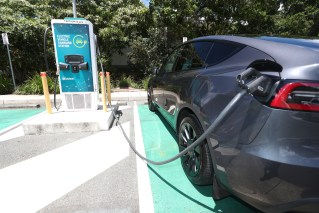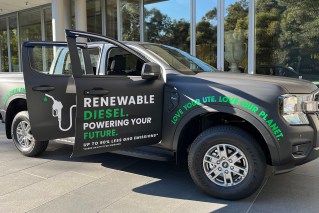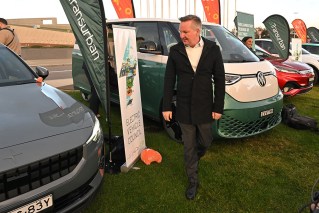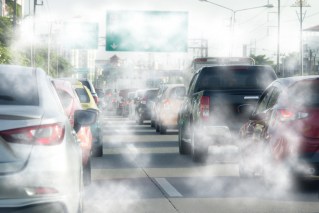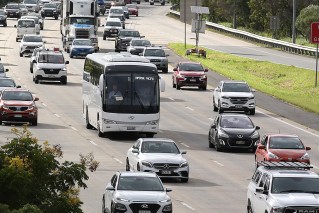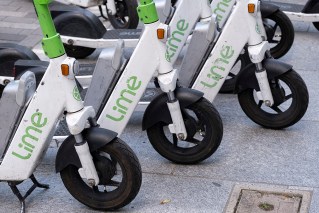Top notch, but this VW may be a victim of bad timing
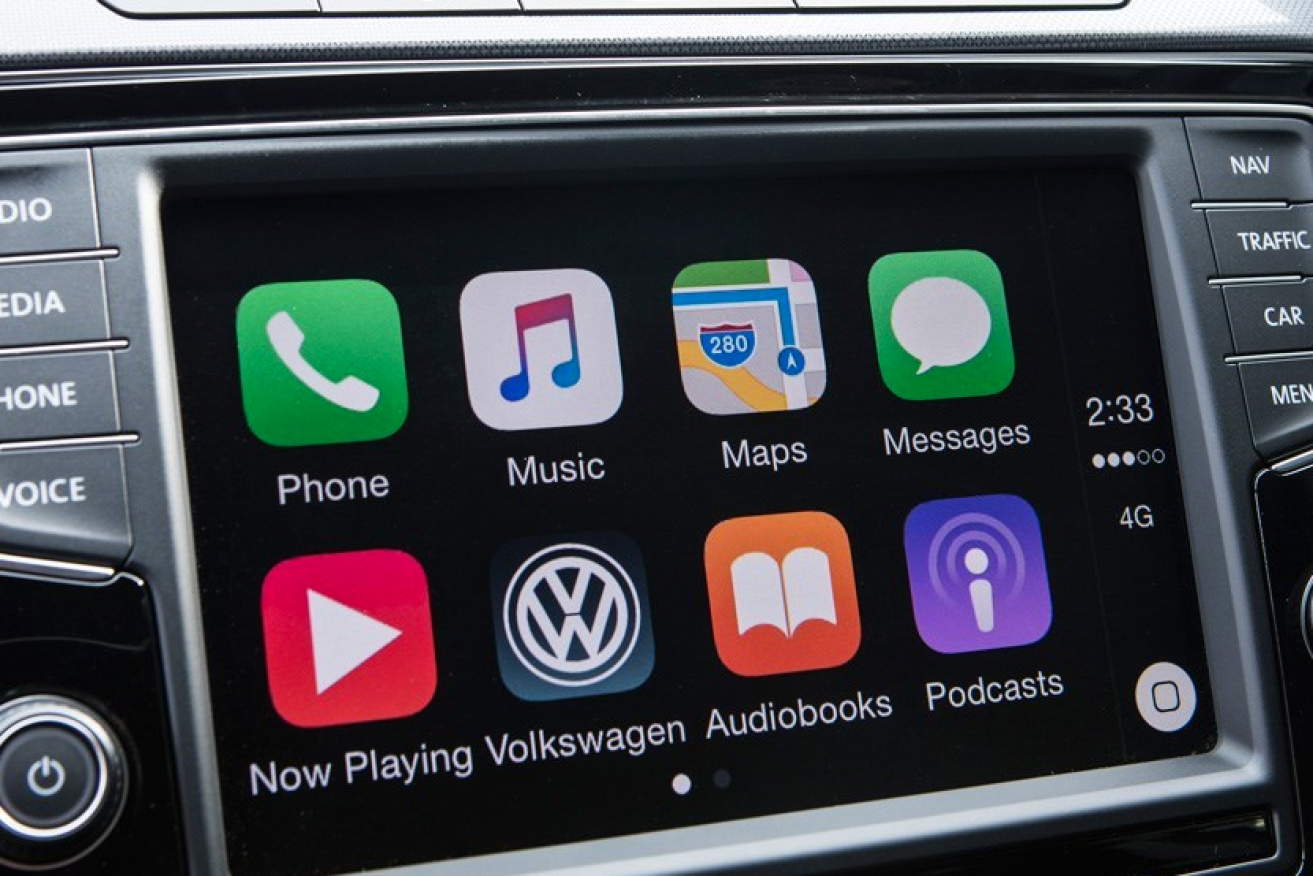
A large touchscreen makes playing music even easier.
Expert rating: 82/100
Engine, drivetrain and chassis: 16/20
Price, packaging and practicality: 18/20
Safety and technology: 17/20
Behind the wheel: 16/20
X-factor: 15/20
The launch of Volkswagen’s new Passat is terrible timing.
Not only is the company in the midst of its emissions scandal but amid fierce new competition in Australia’s rejuvenated mid-size passenger car segment.
That’s a shame, because the new Passat is VW’s best ever in terms of style, packaging, refinement, technology, efficiency and value.
• Jeep Renegade review
• VW cheating excuse pathetic
• Skoda Octavia review
Again comprising sedan and wagon body styles and four-cylinder petrol and diesel engines (there’s no V6 this time), the B8 Passat range brings three equipment grades starting $4000 lower than before at $34,990 for the base 132TSI.
The Passat is Volkswagen’s best-selling nameplate globally, with almost 22 million sold across seven generations spanning 42 years, but in Australia the mid-size German sedan and wagon has always proved less popular than the Golf and, more recently, the Amarok, Polo and Tiguan.

Interior fit and finish is faultless, although power seat adjustment would be good.
VW’s longest surviving nameplate (the first Passat was launched a year before the Golf, in 1973) has also played second fiddle to an increasing number of mid-size rivals from Japan and Korea, not to mention Toyota’s locally-built long-time segment leader, the Camry.
With stocks thin on the ground after production ended nine months ago, so far this year the outgoing B7 Passat has found less than 1500 buyers – less than the Camry, Mazda6, Subaru Liberty and its own sister model, the Skoda Octavia, and only narrowly more than the latest Ford Mondeo, Hyundai i40 and Nissan Altima.
Behind them are a host of French, American and Asian wannabes attempting to standout in the expanding mid-size crowd – many also offering a wagon – like the Citroen C5, Holden Malibu and Insignia, Honda Accord, Kia Optima, Peugeot 508, Renault Latitude and the underrated Suzuki Kizashi.
Like most of them, the B8 Passat again offers petrol and diesel engines driving the front wheels and comes in both sedan and wagon form priced from under $35,000.

The Passat has a solid feel, with little cabin noise.
But Volkswagen Australia has high hopes for its new flagship passenger car, with a lower $34,990 entry price designed to attract more business buyers and an expanded three-variant line-up including a Highline diesel that tops the range at $47,990 in wagon form – and R-Line and Luxury option packs priced from $2500.
The latter aim to tempt buyers of luxury cars like the BMW 3 Series and Mercedes-Benz C-Class, which are around the same size but drive their rear wheels and wear sticker prices starting at least $20,000 higher.
The B8 rides on the same MQB component set as the Golf 7 and is therefore lighter, more efficient and higher-tech than before, as well as being lower, wider and bigger inside, making it both roomier and more stylish.

A large touchscreen makes playing music even easier.
Indeed, with acres of chrome highlights outside and in, and a full-width headlight/grille feature line up front echoed inside by a continuous dashboard recess that contains big, effective air-vents, the latest Passat takes a big step upmarket to match its lower-slung profile, although it may prove too formal for some.
As you’d expect, the doors thud home with vault-like solidity, the cabin is whisper quiet, every surface inside is soft to touch, interior fit and finish is faultless and driver ergonomics are exemplary, with a massive range of steering wheel and front seat adjustment available, although it’s a surprise than not even the Highline offers power driver’s seat slide or height adjustment.
Some have described the B8 as an overgrown Golf but that’s no bad thing.
Its body feels tight as a drum even in the roughest conditions, its electro-mechanical rack-and-pinion steering is well-weighted, direct and glitch-free – but not as involving as the benchmark-setting Mazda6’s – and body control is well resolved with minimal pitch under brakes and roll in corners, while ride quality is commendably supple on standard 17-inch tyres.
However, it’s noticeably firmer on the 140TDI Highline’s bigger 18s and, not surprisingly, undeniably sharp when 19-inch rubber is specified as part of the classy R-Line upgrade option, which also drops ride height by 15mm and adds progressive steering, sports front seats, Nappa leather, a leather multifunction tiller with gearshift paddles, black headlining, piano-black interior highlights, window tinting and a host of other R-Line cosmetic extras.
In top-spec R-Line form the Passat exudes undeniable presence on the road and fully leverages its commodious packaging, which delivers plenty of head, shoulder and leg room, generous vision is all directions and a massive 585-litre boot in the sedan, stretching to 650 in the wagon, which can swallow up to 1780 litres in total. Further increasing practicality, all models get a 60/40-split folding rear seat and a full-size spare.

Perfect for those wanting a BMW without the price tag.
There’s an equipment list to match, too.
The 6.5-inch colour touch-screen in the base 132TSI looks downmarket in comparison to the big 8.0-inch job in other models, which also gain leather upholstery to replace the black cloth trim, but the screen is bigger than the 5.8-inch monitor it replaces.
All variants also offerApple CarPlay, Android Auto, Mirror Link,satellite-navigation with JPEG viewer and multiple phone connectivity, Bluetooth connectivity with music streaming, LED tail-lights, ergoComfort driver’s seat, front seat height adjustment, three-zone climate-control, leather-clad multifunction steering wheel, daytime running lights, cruise control and speed-limiter, LED indicators in side mirrors, front centre armrest with storage, cooled glove compartment, four carpet floor mats, rain-sensing wipers and an auto-dimming rear-view mirror.
Naturally, safety is also top-notch, comprising nine airbags (including front/rear side, front/rear curtains and driver’s knee bags), reversing camera (RVC), stability control (ESP), traction control (ASR), anti-lock brakes (ABS), electronic brake-pressure distribution (EBD), brake assist (BA), Auto Hold, extended electronic differential lock (XDL), driver Fatigue Detection, post-accident Multi-Collision Braking System, front/rear parking sensors, automatic emergency brake lights, tyre pressure monitoring and an electro-mechanical parking brake.
VW claims it hits 100km/h in 7.7 seconds (sedan), and it feels every bit as quick as that, despite the fact it consumes a claimed 4.8L/100km, aided by fuel-saving second-generation idle-stop and regenerative braking systems. We recorded a still-reasonable 6.0L/100km.
The 132kW/250Nm 1.8-litre 132TSI turbo-petrol four is also more powerful and efficient, offering 14kW more peak power but the same 250Nm of torque over 1250-5000rpm. It’s two-tenths slower to 100km/h and consumes a claimed 6.0L/100km in both sedan and wagon form.
In short, like the Golf 7, the new Passat is difficult to fault and offers more equipment and similar design, build and finish quality to the premium German players for a little over half the price. Anyone in the market for an accomplished mid-size family car that overlooks the Passat because of VW’s Dieselgate debacle would be doing themselves a great disservice.
2016 Volkswagen Passat 132TSI Wagon and 140TDI sedan pricing and specifications:
Price: $36,990 and $47,990 (plus on-road costs)
Engine: 1.8-litre four-cylinder turbo-petrol and 2.0-litre turbo-diesel
Output: 132kW/250Nm and 140kW/400Nm
Transmission: Seven-speed and six-speed dual-clutch
Fuel: 6.0L/100km and 4.8L/100km (ADR Combined)
CO2: 136g/km and 125g/km (ADR Combined)
Safety rating: Five-star EuroNCAP
What we liked:
>> Design and build quality
>> Improved packaging
>> Efficiency and refinement
Not so much:
>> Firmish ride especially on R-Line 19s
>> Base model lacks big screen
>> No power seat slide/height adjust
Also consider:
>> Mazda6 (from $32,540)
>> Hyundai i40 (from $32,490)
>> Subaru Liberty (from $29,990)
Originally published on motoring.com.au. All images via motoring.com.au.

